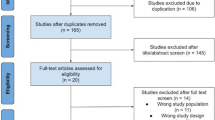Abstract
The mechanism of the topical delivery of piroxicam, a nonsteroidal antiinflammatory drug, has been controversial as to whether systemic absorption is required for topical efficacy. This study, using in vivo pigs treated with topical 3H-piroxicam gel, was designed to assess the role of systemic absorption on its delivery to deep tissues. Further, the role of the structure of the cutaneous vasculature (e.g., direct cutaneous or musculocutaneous) was studied. Finally, piroxicam delivery was measured using in vitro diffusion cells with pig skin obtained from the same sites to determine inherent permeability independent of vascular anatomy. These studies showed that penetration of the radiolabel occurred in subcutaneous and muscle tissue only under the dosed sites and not at the remote sites, ruling out systemic absorption as a prerequisite for local delivery. Tissue penetration in vivo was enhanced at the musculocutaneous compared to the direct cutaneous sites. In contrast, in vitro flux was identical in skin harvested from the two vascular sites, suggesting that the vasculature plays a pivotal role in deep tissue penetration of piroxicam. In conclusion, local delivery of topical drugs occurs independent of systemic absorption and the nature of the cutaneous vasculature at different sites must be taken into consideration for optimal delivery.
Similar content being viewed by others
REFERENCES
S. C. McNeill, R. O. Potts, and M. L. Francoeur. Local enhanced topical delivery of drugs: Does it truly exist? Pharm. Res. (in press).
J. E. Riviere and P. L. Williams. Pharmacokinetic implications of changing blood flow in skin. J. Pharm. Sci. 81:601–602 (1992).
Y. Wada, Y. Etoh, A. Ohira, H. Kimata, T. Koide, H. Ishihama, and Y. Mizushima. Percutaneous absorption and anti-inflammatory activity of indomethacin in ointment. J. Pharm. Pharmacol. 34:467–468 (1982).
J. Torrent, I. Izquierdo, M. J. Barbanoj, J. Moreno, J. Lauroba, and F. Jane. Anti-inflammatory activity of piroxicam after oral and topical administration on an ultraviolet-induced erythema model in man. Curr. Ther. Res. 44:340–347 (1988).
R. H. Guy and H. I. Maibach. Drug delivery to local subcutaneous structures following topical administration. J. Pharm. Sci. 72:1375–1380 (1983).
J. E. Riviere, N. A. Monteiro-Riviere, and A. O. Inman. Determination of lidocaine concentrations in skin after transdermal iontophoresis: Effects of vasoactive drugs. Pharm. Sci. 9:211–214 (1992).
T. R. Bosin and R. B. Rogers. Site specific deuteration or triation of benzothiophene and 1-methyl indole analogs of biologically-active indole derivatives. J. Label. Compd. 9:395–403 (1973).
E. B. Whipple. On the assignment of 13C resonances in unsymmetrical orthodisubstituted benzene rings. Org. Magn. Reson. 10:23–25 (1977).
D. C. Hobbs and T. M. Twomey. Metabolism of piroxicam by laboratory animals. Drug Metab. Dispos. 9:211–214 (1992).
N. A. Monteiro-Riviere, D. G. Bristol, T. O. Manning, and J. E. Riviere. Interspecies and interregional analysis of the comparative histological thickness and laser Doppler blood flow measurements at five cutaneous sites in nine species. J. Invest. Dermatol. 95:582–586 (1990).
J. E. Riviere, B. Sage, and P. L. Williams. Effects of vasoactive drugs on transdermal lidocaine iontophoresis. J. Pharm. Sci. 80:615–620 (1992).
J. E. Riviere and P. L. Williams. Pharmacokinetic implications of changing blood flow in skin. J. Pharm. Sci. 81:601–602 (1992).
P. L. Williams and J. E. Riviere. A model describing transdermal iontophoresis delivery of lidocaine incorporating consideration of cutaneous microvasculature state. J. Pharm. Sci. (in press).
N. A. Monteiro-Riviere and M. W. Stromberg. Ultrastructure of the domestic pig (Sus scrofa) from one through fourteen weeks of age. Anat. Histol. Embryol. 14:97–115 (1985).
N. A. Monteiro-Riviere. Specialized technique: Isolated perfused porcine skin flap. In B. W. Kemppainen and W. G. Reifenrath (eds.), Methods for Skin Absorption, CRC Press, Boca Raton, FL, 1990, pp. 175–189.
N. A. Monteiro-Riviere. Comparative anatomy, physiology, and biochemistry of mammalian skin. In D. W. Hobson (ed.), Dermal and Ocular Toxicology: Fundamentals and Methods, CRC Press, Boca Raton, FL, 1991, Chap. 1, pp. 3–71.
Author information
Authors and Affiliations
Rights and permissions
About this article
Cite this article
Monteiro-Riviere, N.A., Inman, A.O., Riviere, J.E. et al. Topical Penetration of Piroxicam Is Dependent on the Distribution of the Local Cutaneous Vasculature. Pharm Res 10, 1326–1331 (1993). https://doi.org/10.1023/A:1018973814456
Issue Date:
DOI: https://doi.org/10.1023/A:1018973814456




